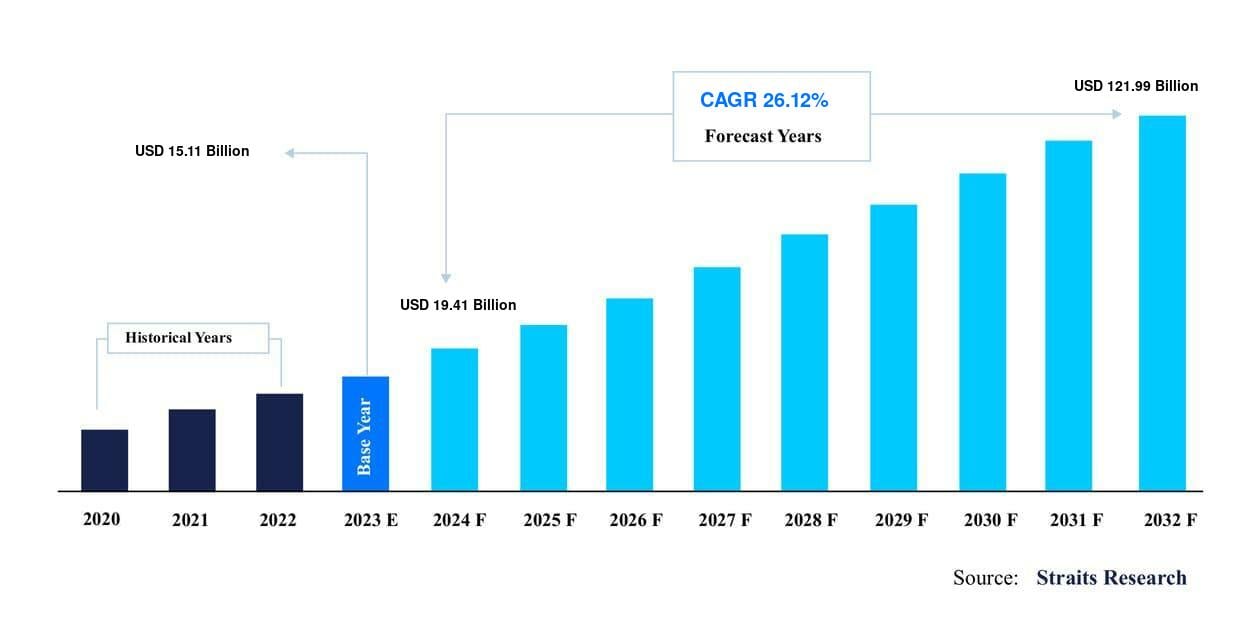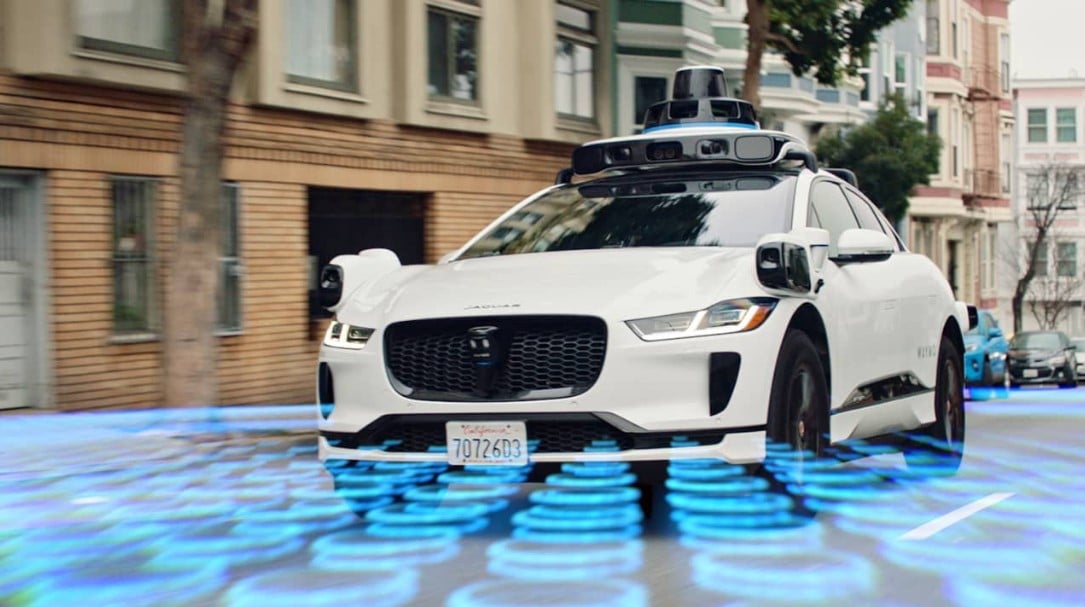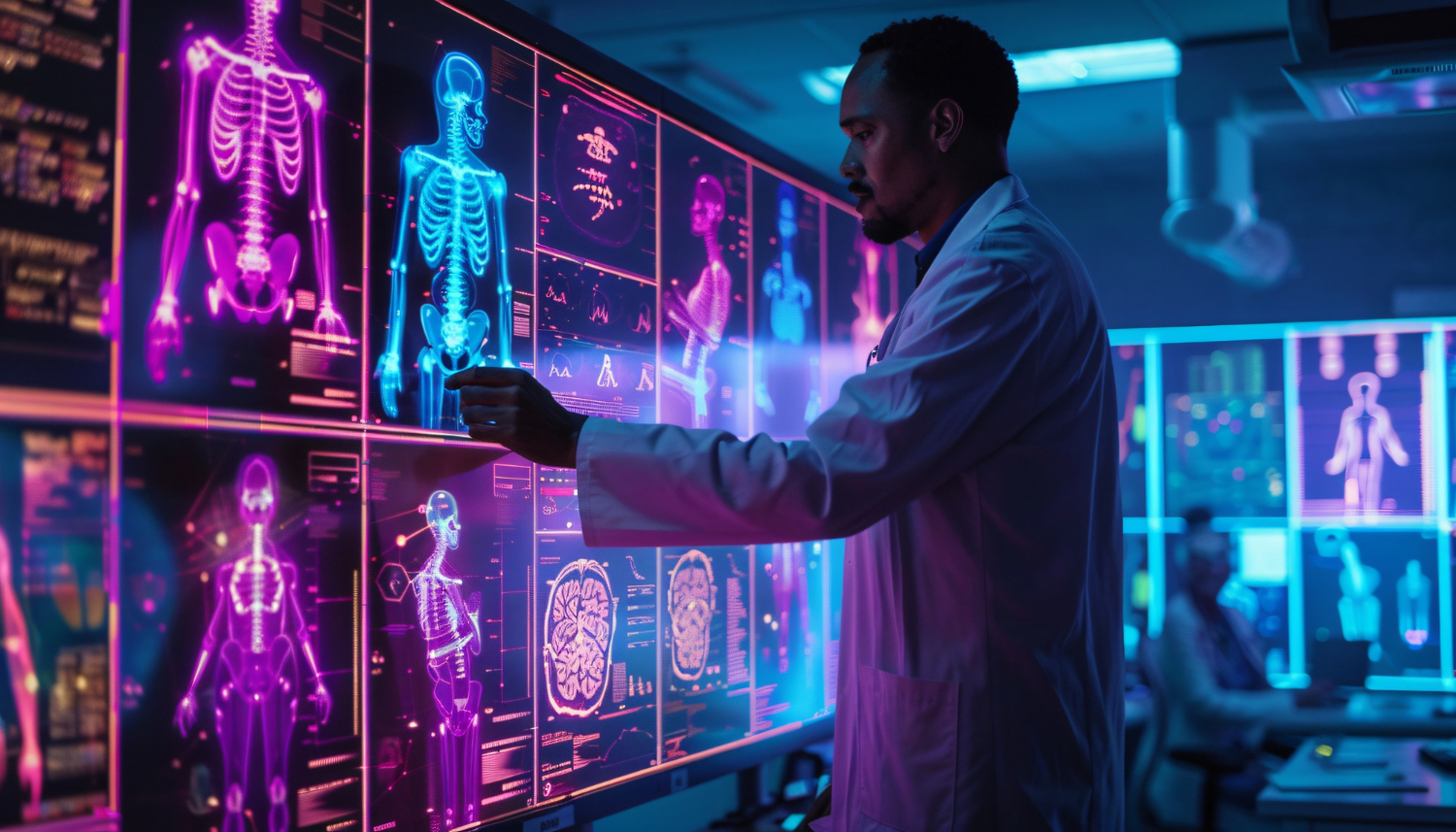Introduction
Videos play an important part in modern society and pop culture. For example, we use videos for entertainment, but we also use videos for surveillance to keep us safe. Inevitably, videos are a part of almost all aspects of our lives. Traditional methods of video creation, editing, and processing were time-consuming. Some of the methods involved filming using expensive cameras, developing the films in a darkroom, and editing by manually cutting and splicing film strips together. Even though 20th-century digital technology has made things a lot easier, the process still requires multiple teams of people working in collaboration. That was before the Artificial intelligence (AI) boom. From generating videos to personalised video recommendation systems for social media, AI is making waves in the industry, with the global market projected to reach $121.99 billion by 2032.

In this article, we’ll dive into how AI and its different fields, like computer vision, generative AI, and natural language processing (NLP), are used to generate, edit, process video media, and more. We’ll also explore some of the many use cases of AI in video while discussing the advancements made through the integration of technologies like IoT Edge devices, GPU acceleration, and VR/AR/XR while considering the challenges involved. Let’s get started!
Understanding AI in Video Media
Before we discuss the application of AI in video media, let’s look at how AI’s use for videos has evolved over the years. The roots of artificial video generation can be traced back to the 1960s and 1970s through the use of computer-generated imagery (CGI) in movies. The turning point came with the invention of neural networks in the 1980s. Neural networks, inspired by the structure of the human brain, make it possible for computers to process and recognise patterns in visual data.
The next step in the transformation of AI for video generation came in the 2010s with the rise of advanced deep learning techniques, particularly convolutional neural networks (CNNs), that took the analysis and understanding of complex visual content a step further. It also made way for advancements in computer vision-based video processing techniques like object detection, image segmentation, and scene recognition. These innovations gave AI systems the power to analyse video frames for applications like automatic video tagging, content moderation, and video summarisation. (We’ll discuss some of these in detail in the next section.) Recently, the most remarkable AI milestones in video generation that have inspired many new models were the development of Generative Adversarial Networks (GANs) and Diffusion Models. Both of them have led the way in the production of highly realistic and compelling videos.
The Benefits of Using AI in Video
Before we dive into the applications of AI in video creation and consumption, it’s important to understand why they are so impactful. AI has completely changed the video industry and offers many benefits. Let’s look at some of these advantages:
-
Efficiency: Tasks like video editing, colour grading, and special effects can be automated using AI and save time and resources.
-
Quality: The overall quality of videos can be increased using AI by improving resolution, reducing noise, and stabilising footage. For example, AI can be used to add colour and resolution to old black-and-white video footage.
-
Accessibility: AI can be used to generate captions and subtitles to make videos more accessible to people with hearing impairments.
-
Creativity: New and innovative visual content can be generated using AI. These videos can inspire creativity and push the boundaries of storytelling.
-
Cost-effectiveness: Video and film production costs can be reduced using AI tools by automating tasks and streamlining workflows.
Applications
Now that we have a better understanding of the pros of AI for video creation and consumption, let’s take a closer look at some use cases of artificial intelligence in this field. We’ll also explore some applications of video analysis outside the media industry to better understand the underlying technologies and their versatility.
Video analysis is the use of AI and computer vision to automatically process and interpret visual data from videos. It involves techniques like object detection, facial recognition, motion tracking, and scene classification to extract valuable information from video footage. Beyond video creation and consumption, it’s good to be aware that videos are being analysed for different applications like self-driving cars and surveillance. Understanding these applications can help clarify how AI extracts valuable insights from video content for various purposes.
Video Creation Tools

What if you could create ultra-realistic videos without leaving your room? That’s exactly what AI can do for you. AI innovations like generative AI, GANs, and diffusion models, which we discussed earlier, led to the invention of AI tools like OpenAI’s Sora and Stability AI’s Stable Diffusion, which are some of the many tools currently used for artificial video creation. With these advancements, the AI video generation market is set to reach a staggering $1.96 billion by 2030, so many industries are looking into adopting the technology. Using the latest generative AI tools, you can create and edit video clips with prompts. Artists are also using diffusion models to create animated short films.
Social Media Content Moderation
Social media content moderation is crucial for maintaining decency and safety online. Considering billions of people are online, there is a massive amount of user-generated content that needs to be monitored for a secure online experience. Manually monitoring them is a daunting process, considering the increasing volume of content. AI tools like computer vision are great solutions for this. Computer vision systems can efficiently perform moderation tasks like automatic analysis and classification of harmful content. In real time, computer vision can be used to filter abusive, fake, and misleading content. Techniques like GPU acceleration are also used for much faster, real-time processing.
For example, YouTube, with more than 333,000 hours of video content getting uploaded in an hour, uses computer vision techniques to analyse and filter videos that violate their community guidelines. Whenever a user uploads a video, it goes through a process of analysis to see if it’s safe. By recognising patterns and features within the video frames, computer vision algorithms can detect inappropriate content, such as violence, nudity, or hate speech.
Autonomous Vehicles

Have you ever wondered how self-driving cars can always find their way, take turns, avoid obstacles, etc? It is all thanks to AI. Companies like Tesla and Waymo use computer vision models trained to recognise everything on the road, including traffic signs, other cars, and pedestrians. These models process the data locally on the vehicle’s on-board IoT Edge devices to make sure there is no delay. These features ensure safety for the driver and everyone else on the road.
While this application isn’t directly related to video creation and consumption, it gives us a good idea of how videos are processed using computer vision. In the context of self-driving cars, the AI solution analyses live video feeds from cameras to make split-second decisions. Similarly, in the video industry, computer vision is used to analyse video frames for tasks like automated editing, content moderation, and enhancing video quality. By understanding how AI processes visual data in such critical applications, we can better appreciate the underlying technology that also drives innovations in video creation and consumption.
Video Surveillance Systems
The use of AI in video surveillance systems has proven itself to be game-changing and is another great example of how videos can be analysed. It works by using computer vision techniques like object detection to process frames of surveillance video footage to identify objects. These objects include people, vehicles, animals, etc.
For added security, all the video analysis can be done locally using IoT edge computers that eliminate the need for cloud processing and storage. This can also be done by adding GPU accelerators to speed up the analysis further. Using such a system helps the user identify specific objects or anomalies in the surveillance video and can assist security guards with 24/7 automated monitoring. These systems can help in facilities like airports and railway stations where security is essential. For instance, Heathrow Airport in London saw a 30% decrease in security breaches after deploying AI video surveillance systems.

The same AI concepts used in video surveillance, like analysing frames to detect and categorise objects, are also what makes it possible for AI to understand what a video is about. It is useful for organising videos by genre, tagging content, or improving recommendations on streaming platforms. With computer vision, AI solutions can automatically determine if a video is a drama, action, or comedy, making it easier to manage and improving the user experience. In the next section, we’ll explore this in more detail.
Enhanced User Experience for Entertainment Systems
If you’ve ever wondered how online movie streaming platforms like Netflix can accurately recommend content that you like, you’re not the only one. The technology behind it is called Natural Language Processing (NLP), which is a branch of AI. NLP can accurately process and generate textual data. Advanced NLP techniques are used by Netflix to provide their customers with personalised recommendations based on what they search. NLP is also used by video streaming platforms to generate transcripts and subtitles for video content.

Another way AI can be used to enhance user experience is through the integration of AR/VR/XR technologies in gaming, movies, and learning. AR/VR/XR devices like the Apple Vision Pro can be used to view video content to elevate the overall movie viewing experience. Let’s say you are watching a historical documentary, you would feel transported back in time thanks to AR/VR/XR.
These devices also have computer vision features to detect and recognise hand gestures for navigation. In addition to this, Apple Vision Pro can be used to make the movie-watching experience more fun by detecting and replacing a wall or the roof of your house (if you’re indoors) with a cinema screen. In fact, according to surveys, 68% of people believe VR technology improves the video/movie-watching experience.
The Challenges
Now that we’ve explored some of the many applications of AI in video and media let’s consider some challenges. As AI continues to advance, it’s important to understand these challenges to make sure AI is used efficiently within the industry:
-
Upskilling and Reskilling: Encourage employees (video editors, digital artists, etc) to acquire new skills and knowledge related to AI and its applications in video production to stay up to date with the latest tech in the industry.
-
Bias: AI algorithms can perpetuate biases in the data they are trained on, leading to unfair or discriminatory outcomes in video production.
-
Privacy: These systems may collect and process personal data, raising concerns about privacy and data protection.
-
Cost: While the cost of implementing AI solutions can vary, it can become expensive if not managed carefully and without the right expertise.
-
Technical Limitations: AI technology is still evolving, and there may be limitations in terms of accuracy, reliability, and scalability.
-
Policy and Regulatory Frameworks: Policies and regulations need to be developed to support a fair and equitable transition to an AI-driven future.
By proactively addressing these challenges, the video industry can harness the benefits of AI while minimising its negative impacts. A strong collaborative effort is needed to involve all major stakeholders and solution providers like TechnoLynx to solve such challenges.
What We Can Offer as TechnoLynx
TechnoLynx is a software development company that helps startups and businesses upgrade their core AI technology. We aim to deliver tailor-made AI solutions to handle unique challenges. We specialise in guiding businesses through detailed research and development, from sketches to implementation. We understand your business needs and problems and deliver the best solution.
Our expertise in AI and AI-integrated solutions like computer Vision, generative AI, GPU acceleration, NLP, and VR/AR technologies covers almost all your business goals. We also care for scalability, security, and compatibility concerns for your business. Get in touch with us and see how you can elevate your business!
The Road Ahead
AI is changing the video industry in significant ways, making it easier, more creative, and more accessible. It automates tasks like video editing and even creates new types of visual content, which completely redefines how we make and watch videos. However, these advancements also bring challenges, such as bias, privacy issues, and the need for people to learn new skills. By addressing these challenges, the industry can keep innovating in a responsible way. AI will continue to play a big role in the future of video creation, consumption, and analysis, opening up new possibilities for creativity and technology.
Sources For Images:
-
Apple. (2023) Introducing Apple Vision Pro: Apple’s first spatial computer, Apple, 5 June.
-
OpenAI. (n.d.). Creating video from text, OpenAI.
-
Staqu Technologies. (2021) Role of CCTV Video Analytics Solutions in Airport Security and Operations, Medium, 25 August.
-
Straits Research. (2024). Ai In Media And Entertainment Market Size, Share & Trends Analysis Report By Solutions (AI in Media & Entertainment Hardware/Equipment, AI in Media & Entertainment AI in Media & Entertainment Services), By Application (Fake Story Detection, Plagiarism Detection, Personalization, Production Planning & Management, Sales & Marketing, Talent Identification, Content Capture, Sports Automatic Productions) and By Region(North America, Europe, APAC, Middle East and Africa, LATAM) Forecasts, 2024-2032, Straits Researc, 31 July.
-
Waymo. (n.d.). Waymo.
References:
-
Canda, J. (2024). The Role of AI in Content Moderation and Online Safety, Medium, 9 April.
-
Grand View Research, (n.d.). AI Video Generator Market Size, Share & Trends Analysis Report By Component (Solution, Services), By Application (Marketing, Education), By Organization Size, By Source, By Region, And Segment Forecasts, 2024 - 2030, Grand View Research.
-
Hayes, A. (2024). YouTube Stats: Everything You Need to Know In 2024!, Wyzowl, 32 May.
-
Straits Research. (2024). AI In Media And Entertainment Market Size, Share & Trends Analysis Report By Solutions (AI in Media & Entertainment Hardware/Equipment, AI in Media & Entertainment AI in Media & Entertainment Services), By Application (Fake Story Detection, Plagiarism Detection, Personalization, Production Planning & Management, Sales & Marketing, Talent Identification, Content Capture, Sports Automatic Productions) and By Region(North America, Europe, APAC, Middle East and Africa, LATAM) Forecasts, 2024-2032, Straits Research, 31 July.
-
VideoZen, (2023). The Evolution of AI in Video Generation: A Historical Perspective, Medium, 8 August.












